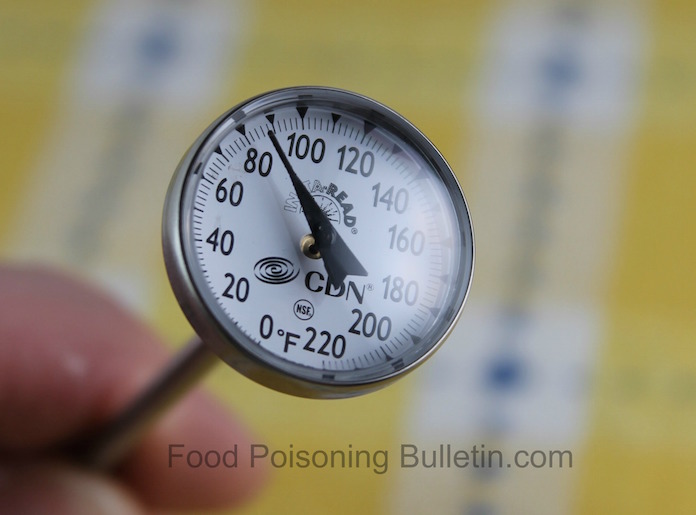The USDA is offering advice to help consumers make 2014 a safe year for food. More than 48,000,000 Americans get food poisoning every year. Although outbreaks get a lot of attention, that only accounts for about 2,000 illnesses each year. The rest are simply from people improperly handling food. Of those millions who get sick, 128,000 are hospitalized and 3,000 Americans die every year from foodborne illness.
 Follow four basic steps when preparing food to greatly reduce your risk of getting sick with a foodborne illness. They are: clean, separate, cook, and chill.
Follow four basic steps when preparing food to greatly reduce your risk of getting sick with a foodborne illness. They are: clean, separate, cook, and chill.
Always wash your hands after using the bathroom, after contact with animals and pets, after changing a diaper, and after coughing, sneezing, and nose wiping. Wash your hands before handling food. Wash utensils, cutting boards, and countertops with soap and hot water. And wash fruits and vegetables thoroughly before eating and preparing.
Keep raw meat, poultry, eggs, and seafood, along with their juices, away from other foods. Separate these foods from each other starting in the shopping cart at the store. Place raw meats in plastic bags to keep them away from foods to be eaten raw. Use separate cutting boards for raw meat, poultry, and seafood. And don’t ever use a plate that held raw meat for serving cooked meat.
Always use a food thermometer when you cook. Color and texture are not reliable indicators of safety. Heat kills pathogenic bacteria. Cook all raw beef, pork, lamb, and veal steaks, chops, and roasts to a minimum internal temperature of 145 degrees F. Let the meat rest for three minutes before carving. Cook all raw ground meats to 160 degrees F. Cook all poultry to 165 degrees F.
After each meal, chill foods promptly. Don’t let any cooked or perishable food sit at room temperature longer than 2 hours; 1 hour if the ambient air temperature is above 90 degrees F. Make sure that your fridge is set to 40 degrees F or below and the freezer is set to 0 degrees F or below. Always thaw frozen foods in the fridge, in cold water, or in the microwave, but if you choose this last method, cook the food immediately.




